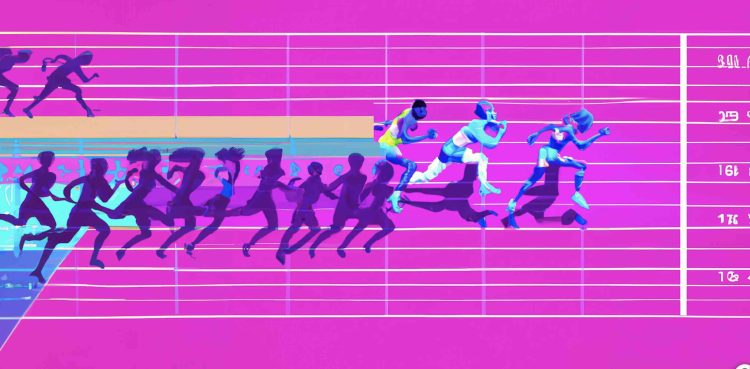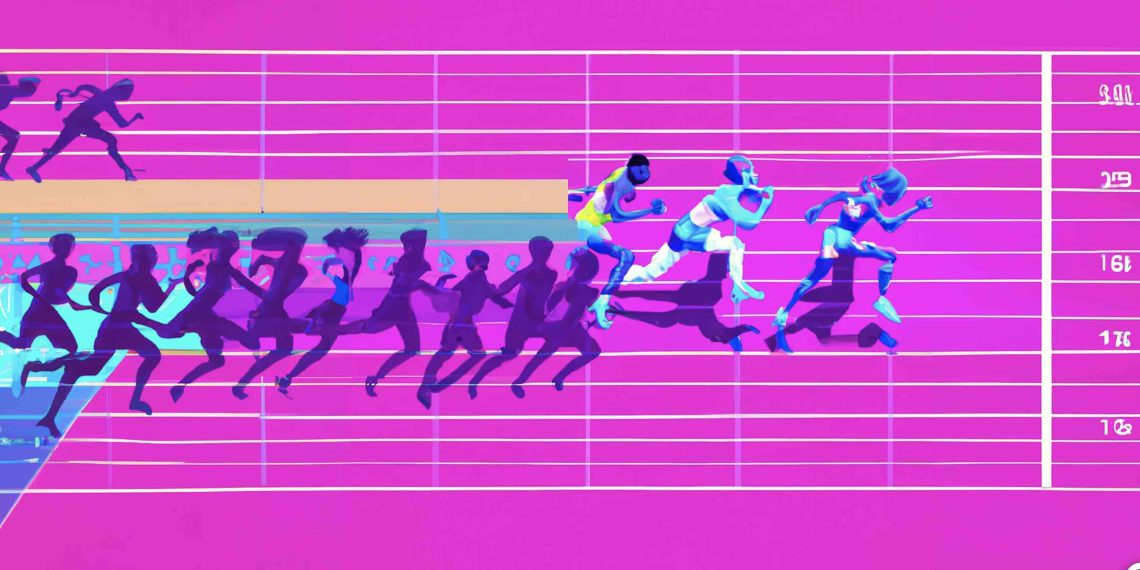Artificial Intelligence has come into the vernacular in 2023, and quite frankly, has been in the zeitgeist for some time. Much of the information out there portrays AI as something that will take over and subjugate humankind. In her first article on the subject of Artificial Intelligence for RunBlogRun, Fiona Norton gives us some basics, which one might call, AI 101, on Artificial Intelligence 101. In a conversation with this editor, Fiona Norton noted that AI can be and should be a great piece of equipment for coaches, trainers, and footwear designers, as long as the process includes consistent, curated human involvement.
Running Into The Future: A Runner’s Guide to AI, by Fiona Norton
Artificial Intelligence is a term that encompasses many forms of technology that are made to mimic human intelligence. While AI is fairly new to the world of track and field, it is going to drastically change its future. Many people are aware that AI exists and may have examples of how it is used in their everyday lives. However, this technology is rapidly growing and expanding, and as it does, it is important to understand what its capabilities and limitations are.
The basis of artificial intelligence is a concept called machine learning. Machine learning is the process in which a computer is able to learn new information independently – that is, without being explicitly programmed or given that information. It uses something called a neural network, an artificial replica of the mechanisms in which a human brain learns, to analyze large amounts of data and derive a summary of the information based on patterns it has detected.
There are a number of ways that computers can use machine learning, but the most popular are natural language processing, image recognition, and predictive analysis. Natural language processing is a type of AI that is capable of producing text, based on its programming, plus information it finds on the internet, and from human input. It uses machine learning to learn how humans communicate and will adapt its responses to give answers that meet specific criteria. Computers can identify and analyze visual information using image recognition.
Predictive analysis is another application of machine learning, in which a computer uses machine learning and statistical inference to predict future outcomes.

The most popular AI technology right now is created by a company called OpenAI, and it has two products: a natural language model called ChatGPT and an image generator called Dall-E. ChatGPT is trained on human speech patterns to provide natural responses, and Dall-E can generate unique new images based off of text prompts. These technologies fall under the category of AI. Their abilities are limited to the scope of whatever task is being given to them, and while they may seem to be capable of thinking and can produce examples of art or music, it’s important to understand that they are still only giving responses based on how they’ve been trained to respond. They are, in essence, different variations of an advanced autocomplete. AGI, or artificial general intelligence, exists only in the hypothetical and science fiction world for now. This would be a type of computer intelligence that could actually think the way that humans can, and make unique decisions based on their knowledge of the world.
There are a few different ways that AI can be used in running. First, through biomechanical analysis. Using computer vision, we can get information about athletes’ movements in real-time. This information can be used to prevent injuries, improve performance, and streamline recruitment. One company, SkillCorner, is using computer vision technology to track players and provide data about their performance. This data is being used to aid in the recruitment process and could potentially be used to prevent injuries as well. Some sports scientists are using AI for gait analysis, as a way to open the door for other ways to analyze players’ movements. Another way is with smart technology.
For coaches and athletes, a smart treadmill could have a set of cameras recording their movements and measuring physiological factors (such as heart rate, oxygen, etc.). Using computer vision, coaches could observe how the athletes’ bodies are moving and how they could move more efficiently to prevent injuries.
This could give a more comprehensive view of an athlete’s capabilities, how they’re doing now, what their strengths are, and how they can improve.
AI can be used by shoe companies to design shoes that are specifically catered to runners’ needs such as comfort, support, and durability.
Finally, AI will impact the fan experience. While it won’t replace traditional media coverage, it can be used as an aid to provide fans with hyper-personalized content based on their interests by analyzing video footage and identifying the most exciting moments. It’s going to impact the future of sports betting, as somebody could use predictive analytics to analyze runners’ past races and identify which people are most likely to win in the future.
The introduction of AI to the running world is only just beginning, but it is sure to make an extraordinary impact on its future. Coaches, athletes, and fans should prepare for AI technology to influence all aspects of the sport, including but not limited to player recruitment, injury prevention, shoe design, and fan engagement.























